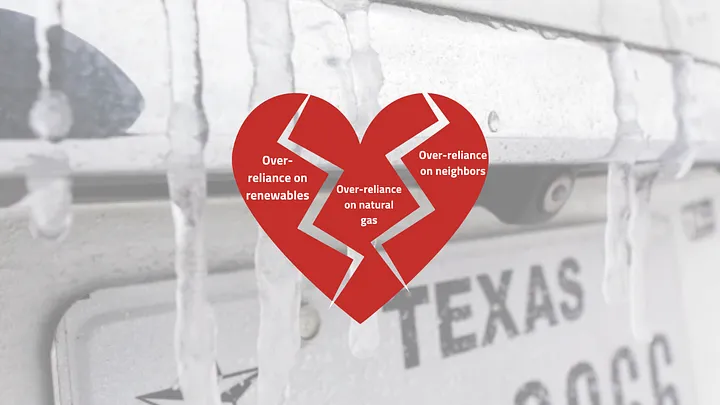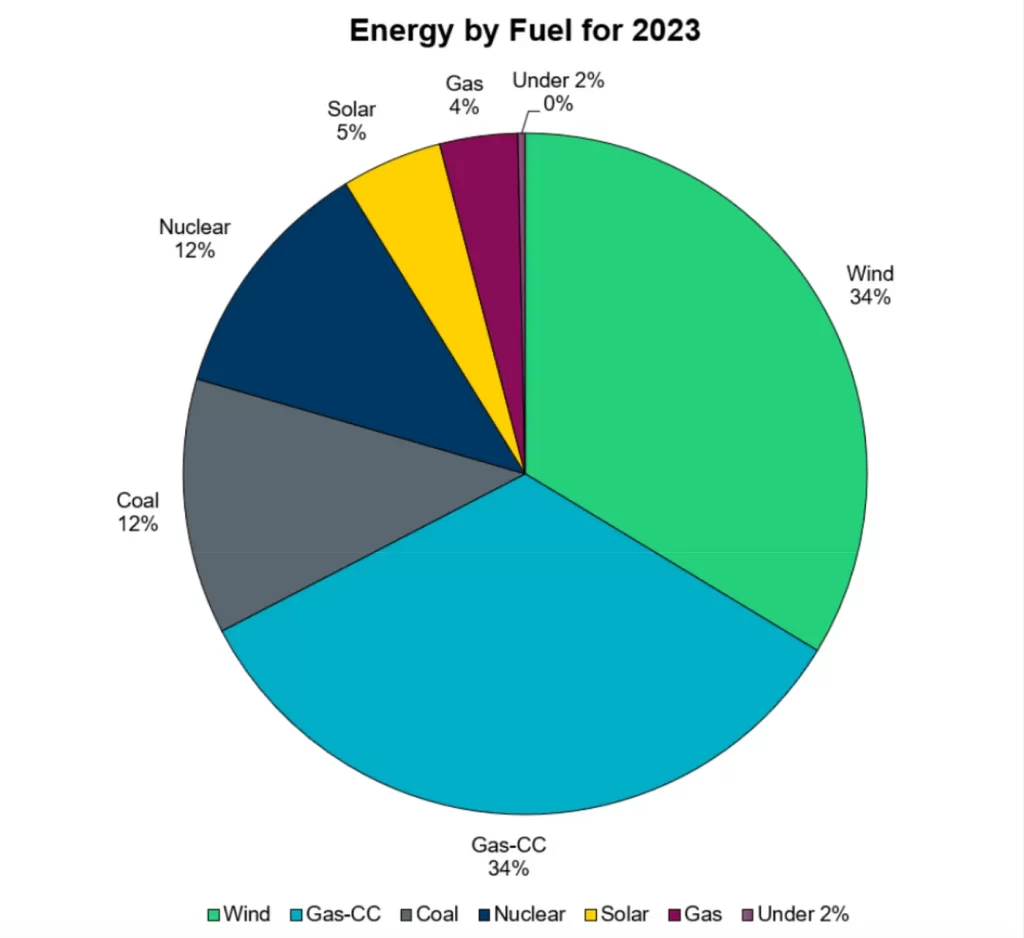Author: Kiersten Sundell

Happy Valentine’s Day to all nuclear lovers! Three years ago today, Texas was hit with a less-than-lovely winter storm that devastated the power grid, left over 4 million without electricity, and resulted in hundreds of lives lost. This was one of the worst power grid failures in recent U.S. history — but what the hell happened?
Well new series called “Juice: Power, Politics, and the Grid” just came out, which explains the dilemma quite well.
They call it the “Fatal Trifecta” – three major (and ultra-simplified) reasons that contributed to one major collapse. Let’s speed-date each of these, shall we?
The first “fatality” is an overreliance on intermittent renewables. Texas has generated more electricity from wind and sun than any other state since 2006, largely because they have so much open space to do so. Texas leaning heavily on renewable energy sources is a great say when the sun is shining and wind is blowing, but becomes less of a brag when those solar panels are covered in snow and wind turbines freeze in place during an energy crisis. In 2021, there was very little battery capacity in the state to store excess renewable energy (about 300 MW), meaning that when snow hit, nearly 40% of Texas’s energy-generating capacity was immediately gone. This brings me to the next part of the heartbreak — overreliance on natural gas.

Natural gas is a hot commodity. It’s used by residential homes for heating, in gas plants for generating electricity, and by industrial and commercial facilities everywhere. Gas is the largest stable (that is, non-intermittent) source of energy in Texas, so when the storm hit, gas plants started using a ton of it to ramp up power production quickly and get electricity out on the grid. At the same time, cold weather was affecting equipment to deliver the gas so overall production was cut by a third, from 21 to 14 billion cubic feet. There was simply not enough gas to go around, so residential supplies of heating gas were being cut off, leaving millions of citizens without any heat at all.
Usually, Texas imports natural gas and electricity from nearby states when they don’t have enough, which is the last part of the fatal trifecta. Overreliance on resources from neighbors. During this particular storm, Texas’s neighbors were equally covered in snow, meaning that they didn’t have any electricity to share. Talk about playing hard to get.
But wait. If nuclear plants produce energy 95% of the time — more than any other energy source — where were they during all of this?
Unfortunately, half of Texas’s four reactors were out for 2–3 days as well. Texas plants aren’t winterized like the ones in the north, causing the coolant temperature sensor to malfunction and automatically trigger the plant to shut down. Regulations required the plants to remain shut down for the majority of the storm, even in this extenuating circumstance. In retrospect, it would have resulted in less loss of life if the plants had been immediately maintained to continue running and powering homes, but in nuclear, the precautionary principle reigns supreme.
Now they say that people can change, so the question is: what has Texas done to get better? To be honest, not much.
ERCOT, the administration that oversees all energy in Texas, has proposed multiple incentives that would make private power companies inclined to produce more energy or even open up retired plants for the winter, all of which have been wildly unpopular. The unfortunate reality of America’s energy market is that power plants are in it for the money, and not for the greater good. Opening up a seasonal plant just doesn’t make much economic sense, and so the energy shortage prevails.
Texas still faces incredible power shortages during temperature extremes in winter and summer, and its remarkably tiny grid might not be enough to fill the gaps. If all of this sounds complicated, that’s because it is. May your love life be less problematic than Texas’s grid — that’s all I have to say.
To watch the full video, visit our TikTok page.


